NECROLOGY, 2025
An exhibition at Haarlem Artspace, Wirksworth.
NECROLOGY is a site of mourning, offering an interface with absences, transitions, rituals, suspensions, shrines, and exhumations. The exhibition speculates on material afterlives, ecological grief, and the economies and systems of death(care) and loss.
Featuing: Emma Bolland, Claye Bowler, Jack Brown, Reuben Brow, Charlotte Dawson, Rebecca Elve, Rebecca Howard, Fred Hubbl, Sam Hutchinson, Lily Lavorato, Chloë Louise Lawrence, Bridget Robinson, Victoria Sharples
Curated by Victoria Sharples in partnership with NMRG & Playing Fields. Supported by the AHE Innovation Fund, University of Derby.
Photographs: Emma Croman
An exhibition at Haarlem Artspace, Wirksworth.
NECROLOGY is a site of mourning, offering an interface with absences, transitions, rituals, suspensions, shrines, and exhumations. The exhibition speculates on material afterlives, ecological grief, and the economies and systems of death(care) and loss.
Featuing: Emma Bolland, Claye Bowler, Jack Brown, Reuben Brow, Charlotte Dawson, Rebecca Elve, Rebecca Howard, Fred Hubbl, Sam Hutchinson, Lily Lavorato, Chloë Louise Lawrence, Bridget Robinson, Victoria Sharples
Curated by Victoria Sharples in partnership with NMRG & Playing Fields. Supported by the AHE Innovation Fund, University of Derby.
Photographs: Emma Croman



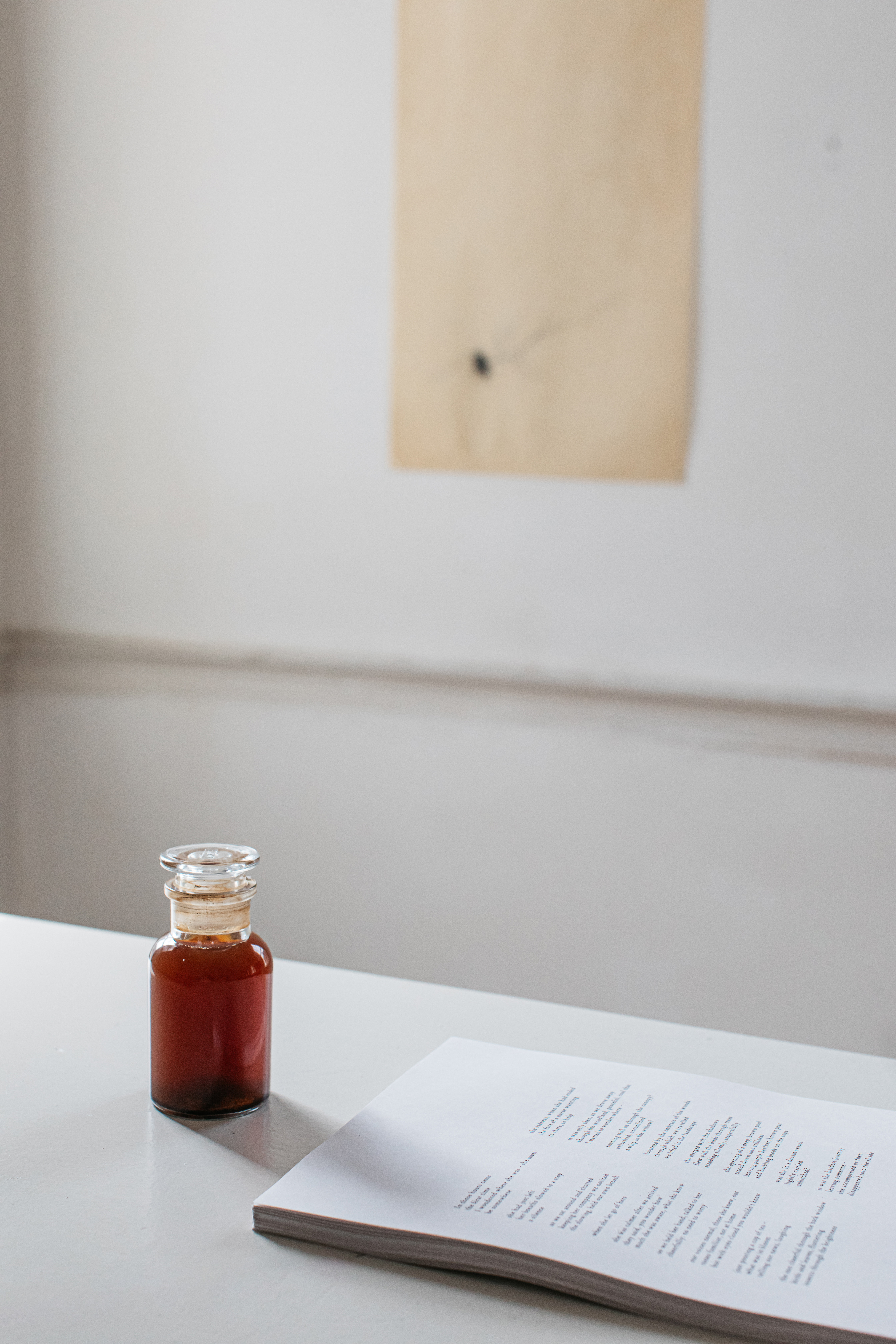

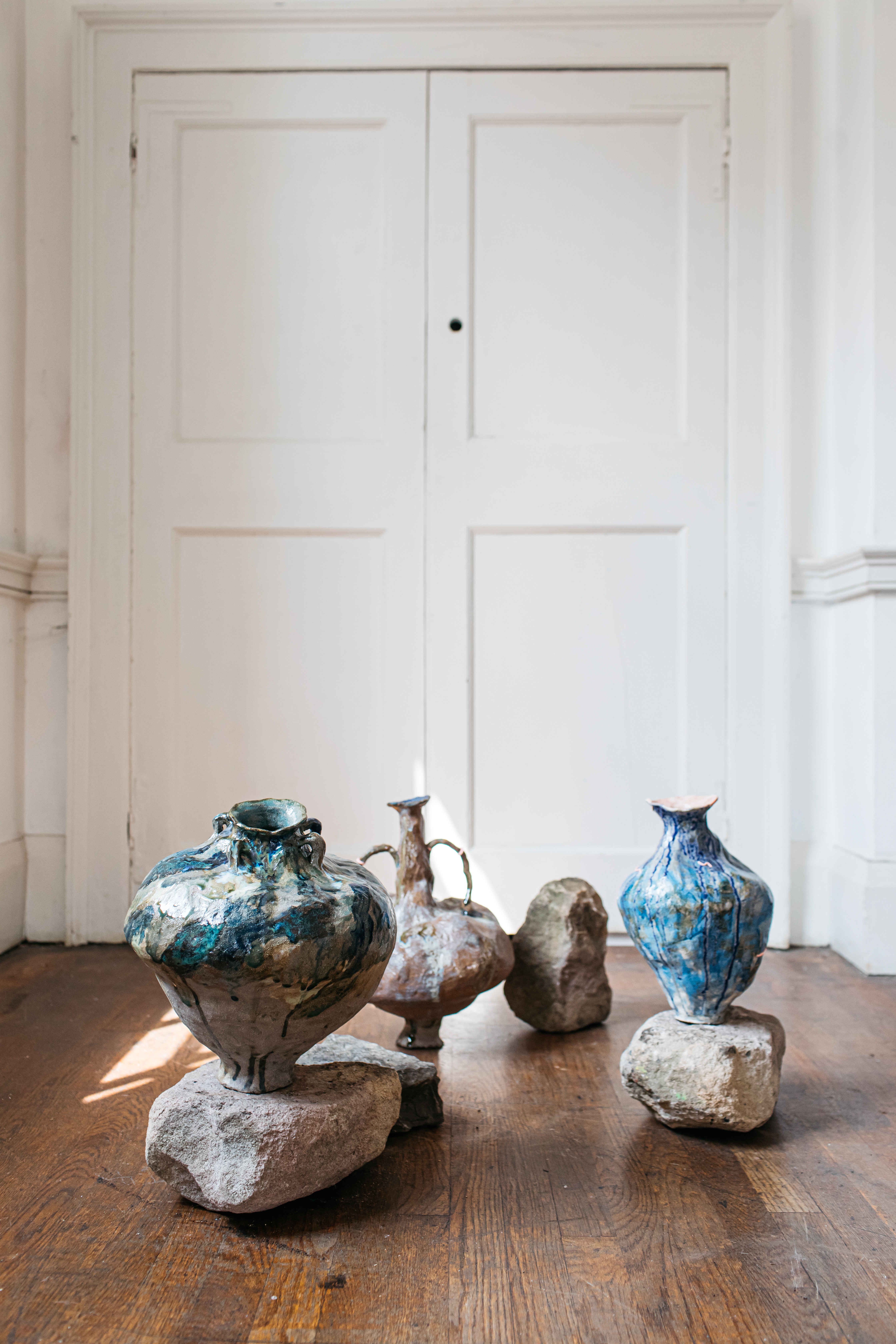
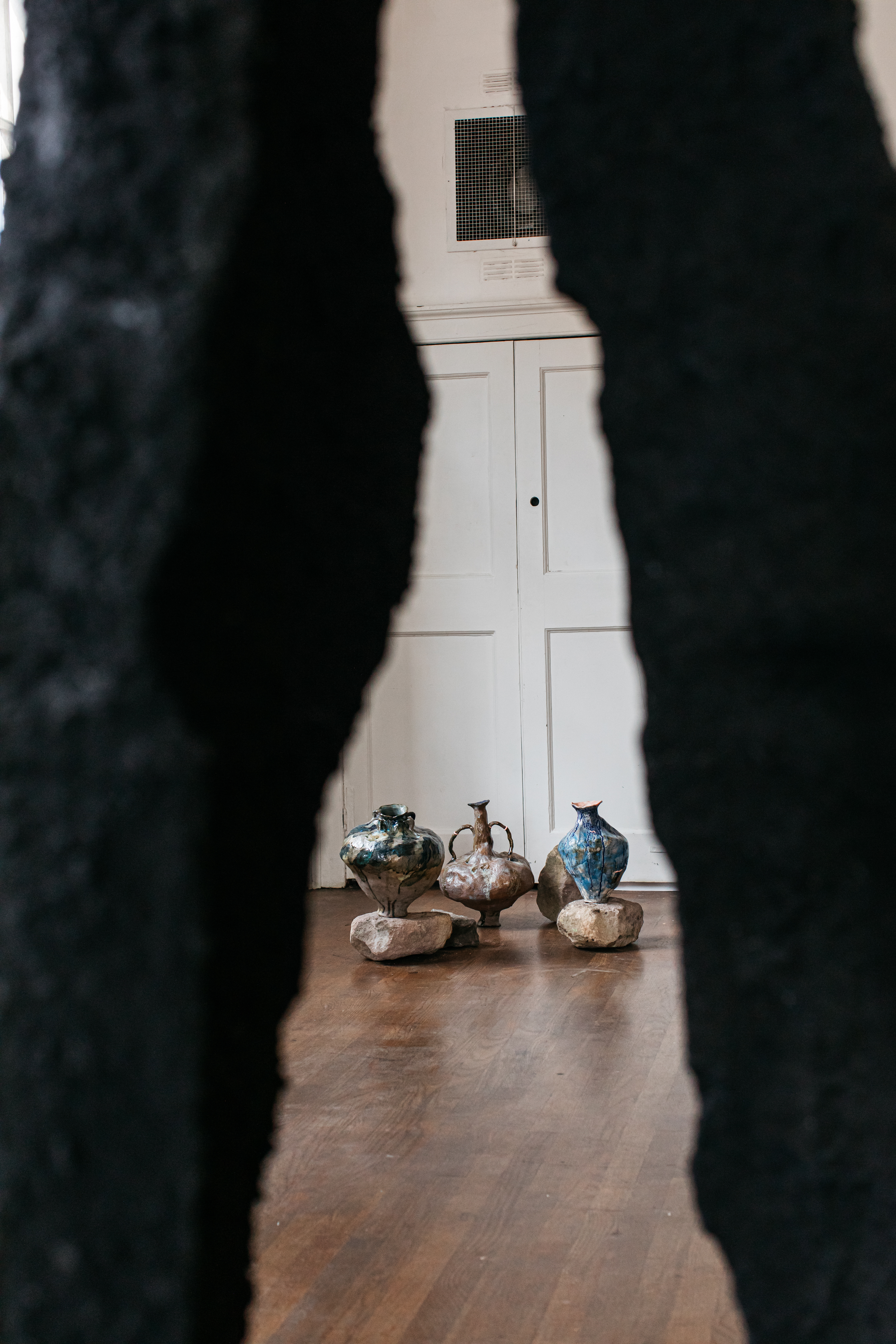
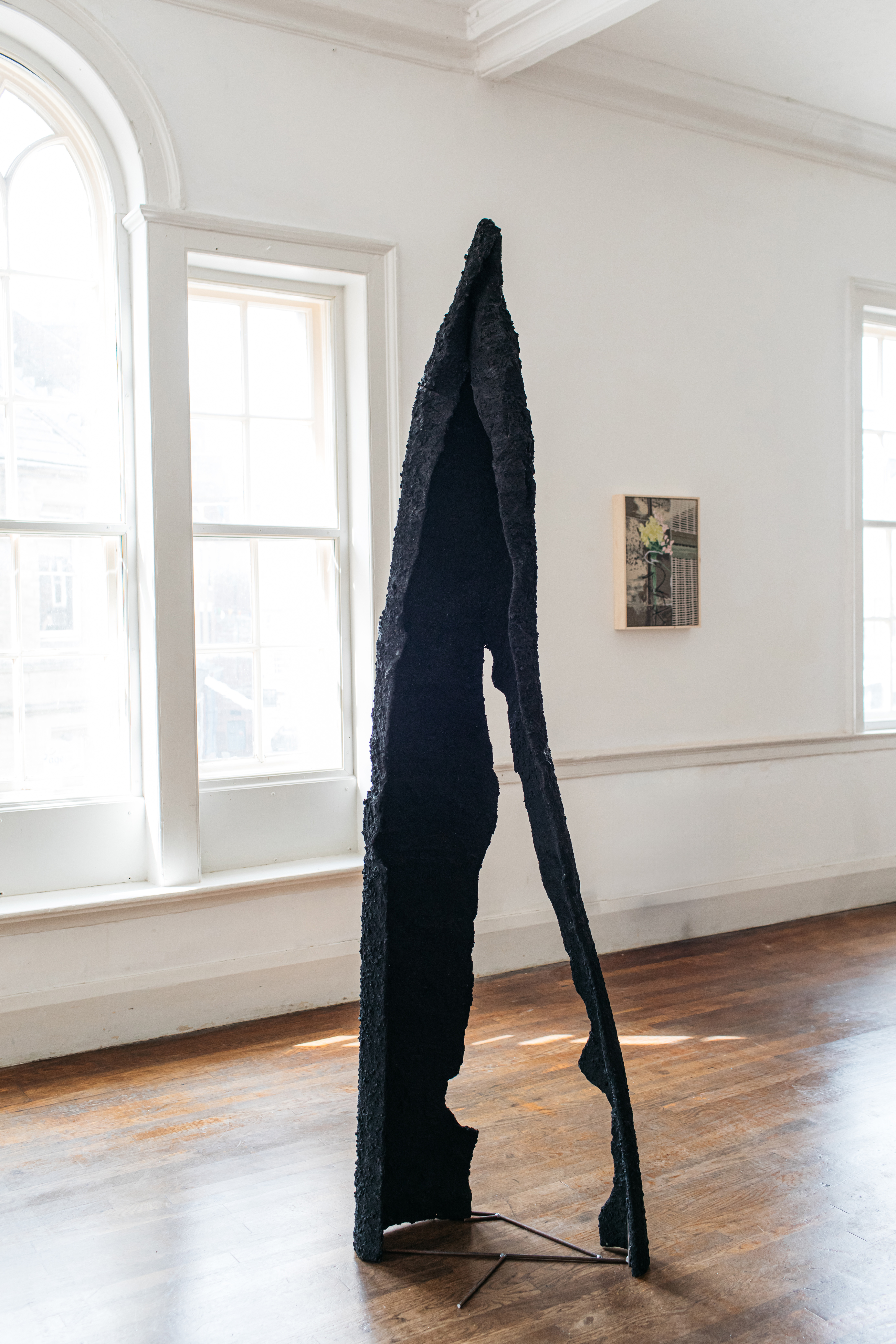


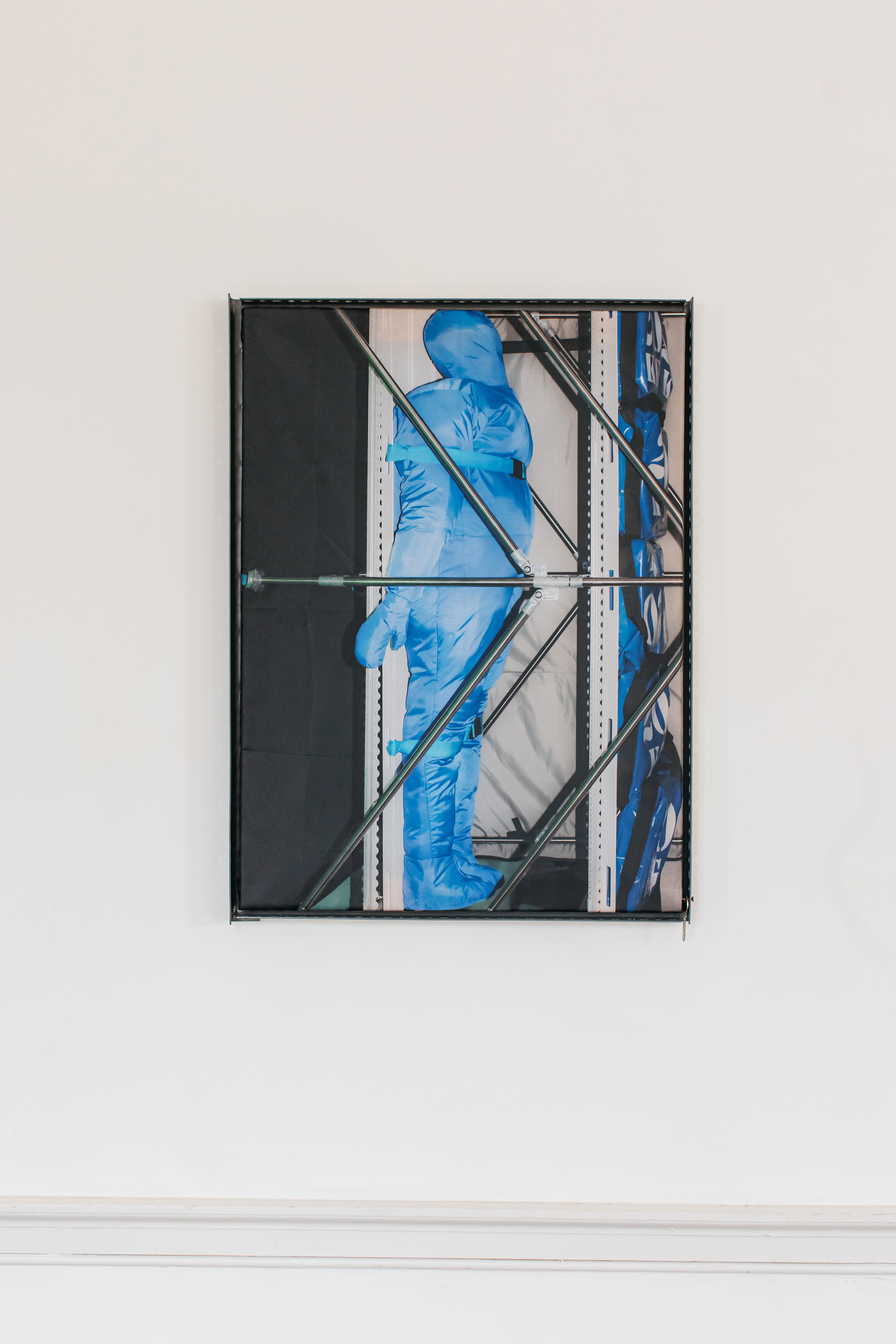
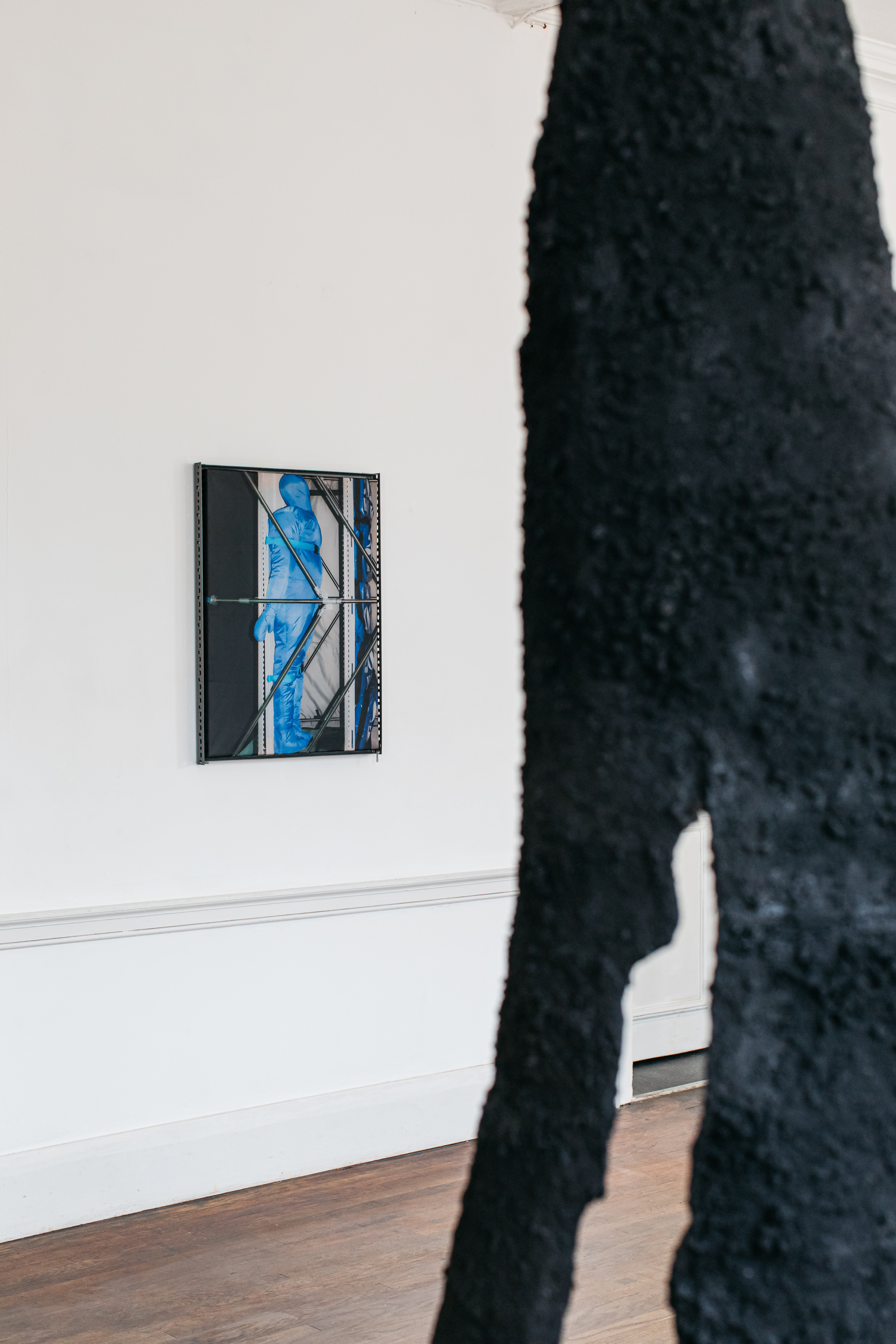

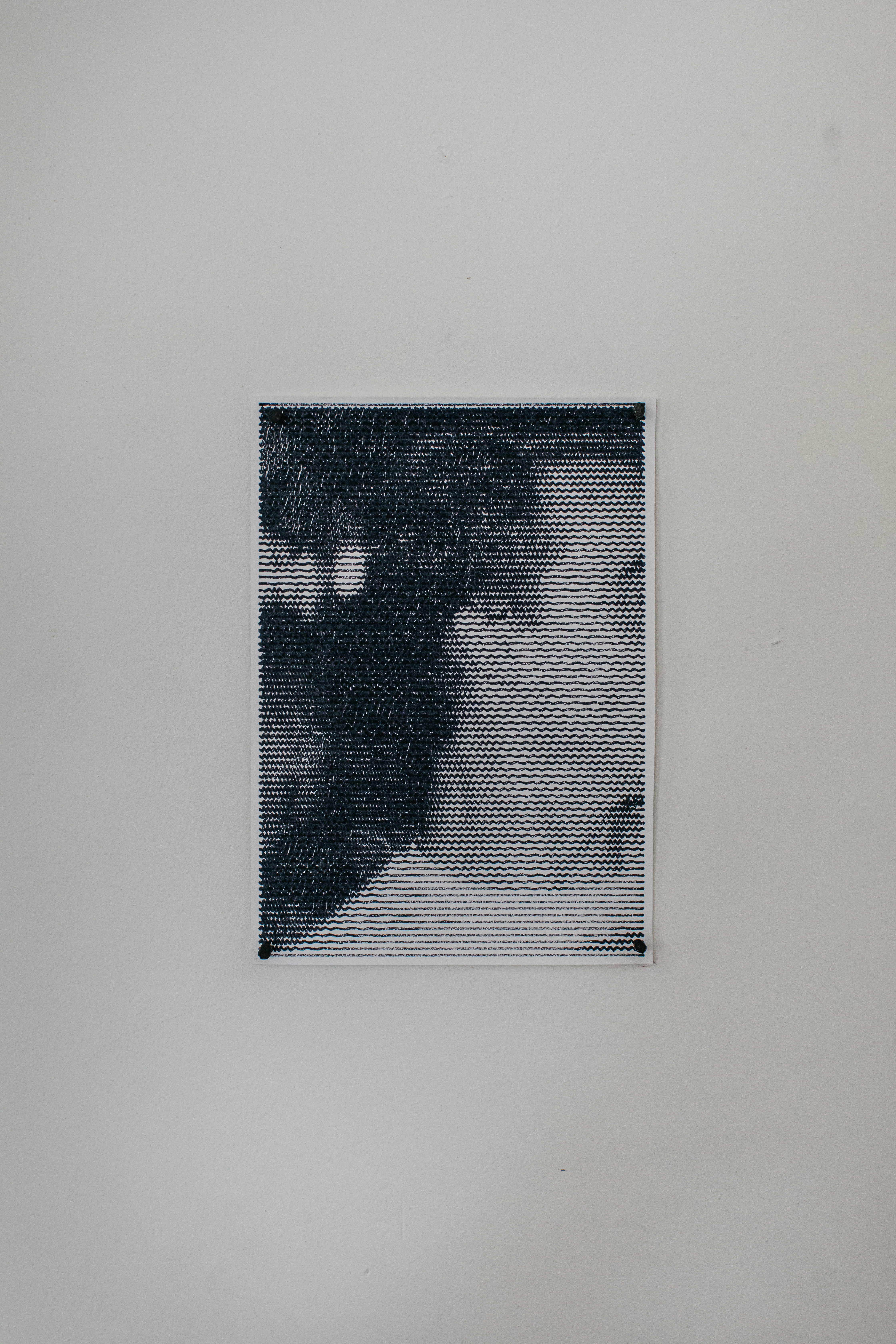
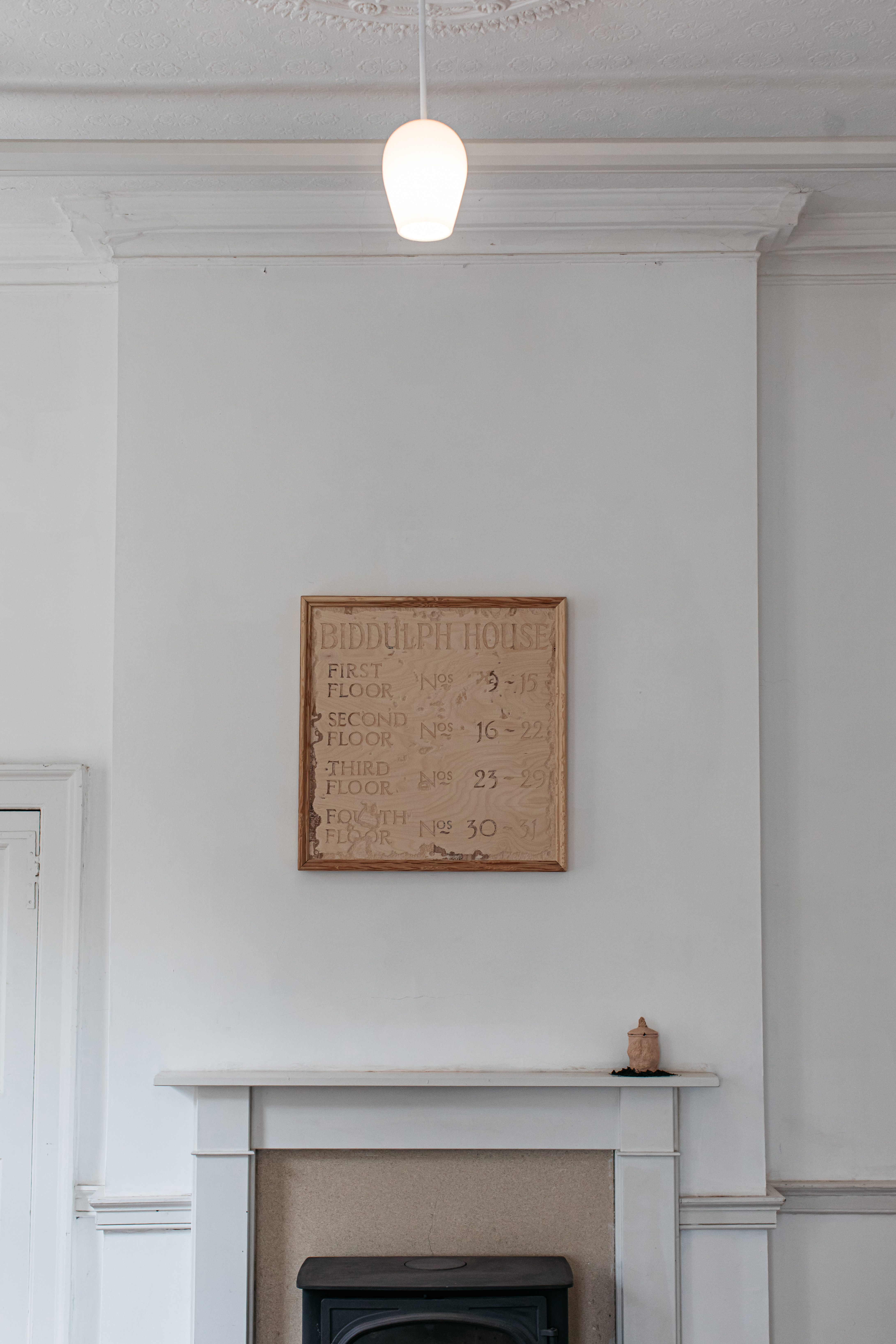

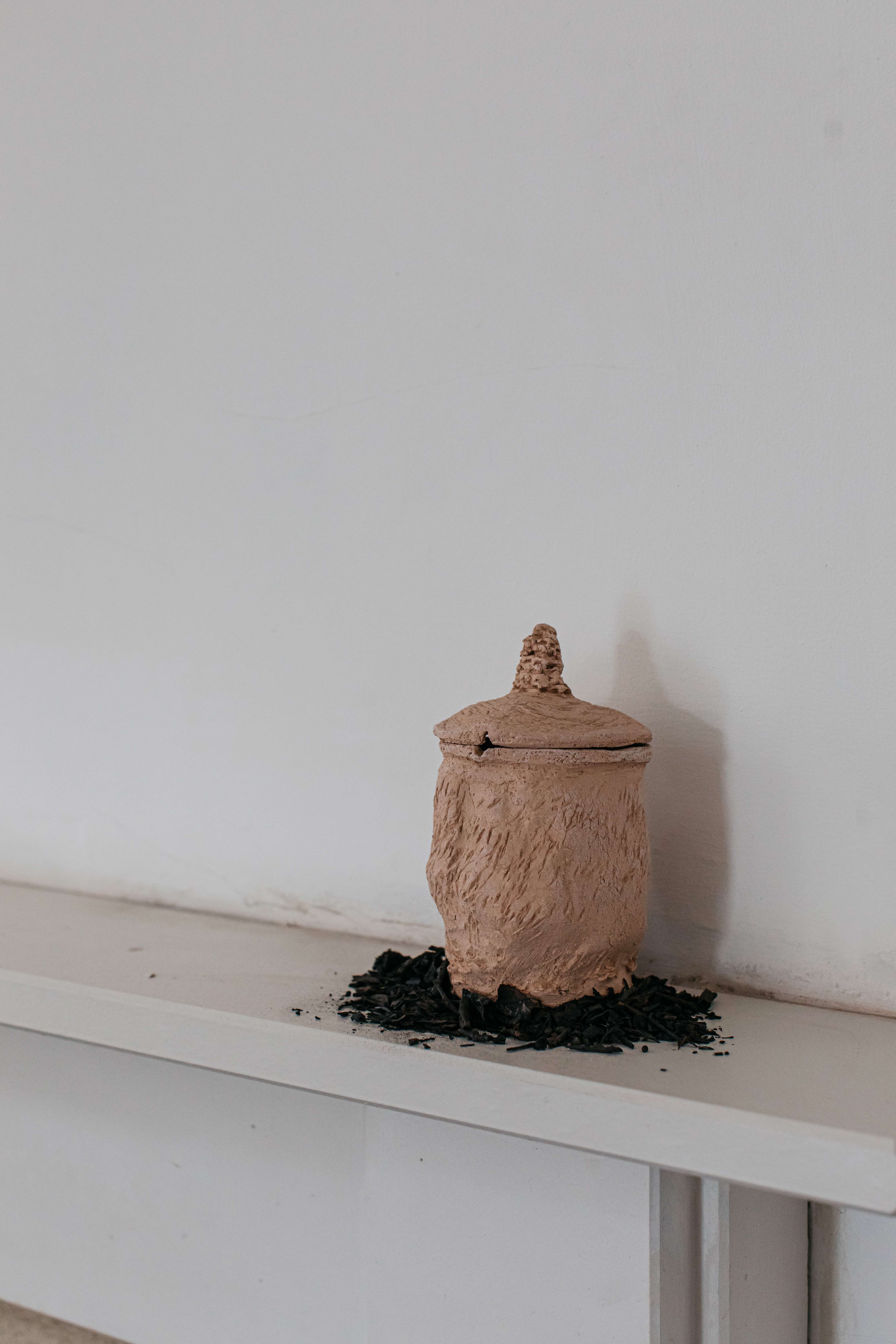
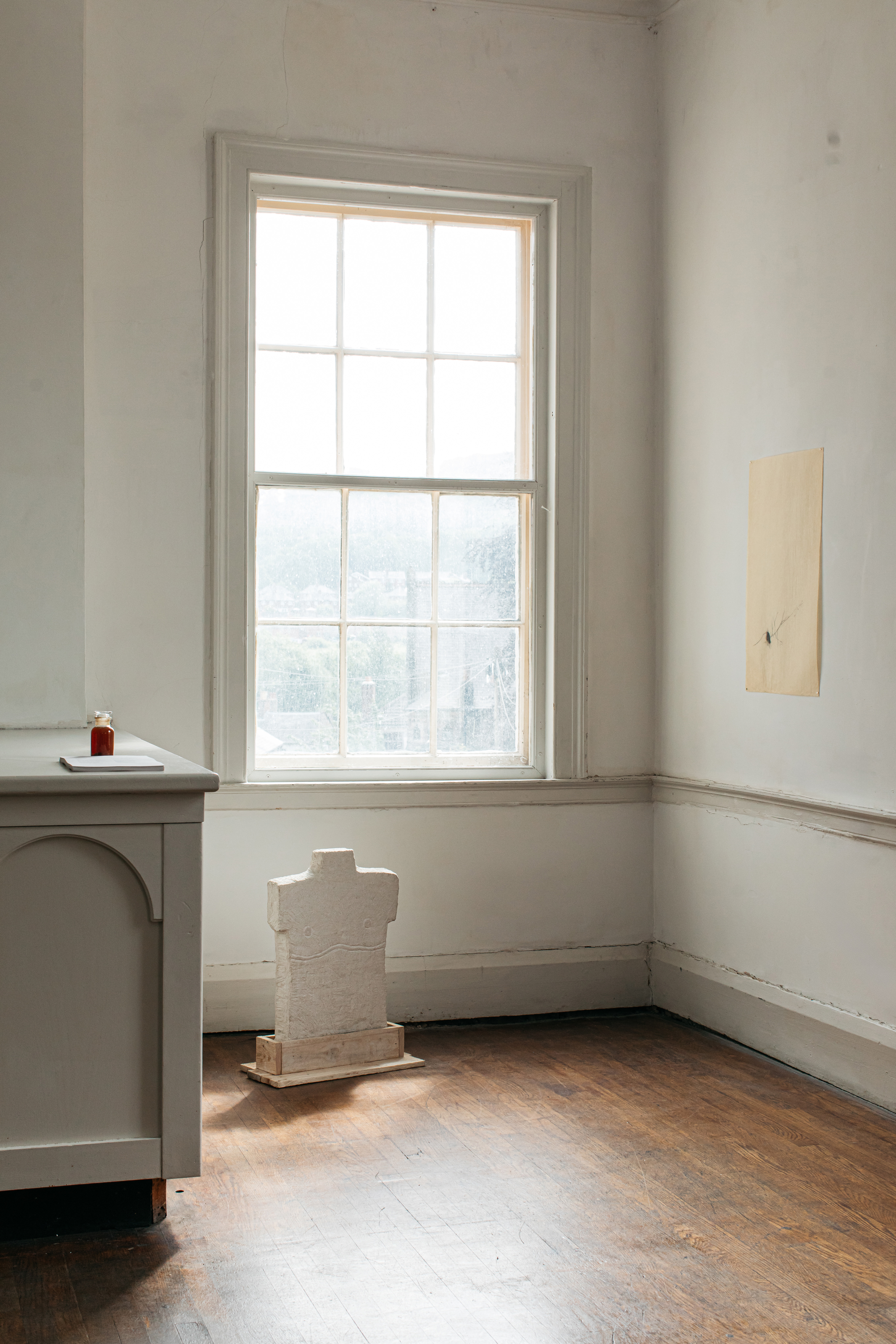
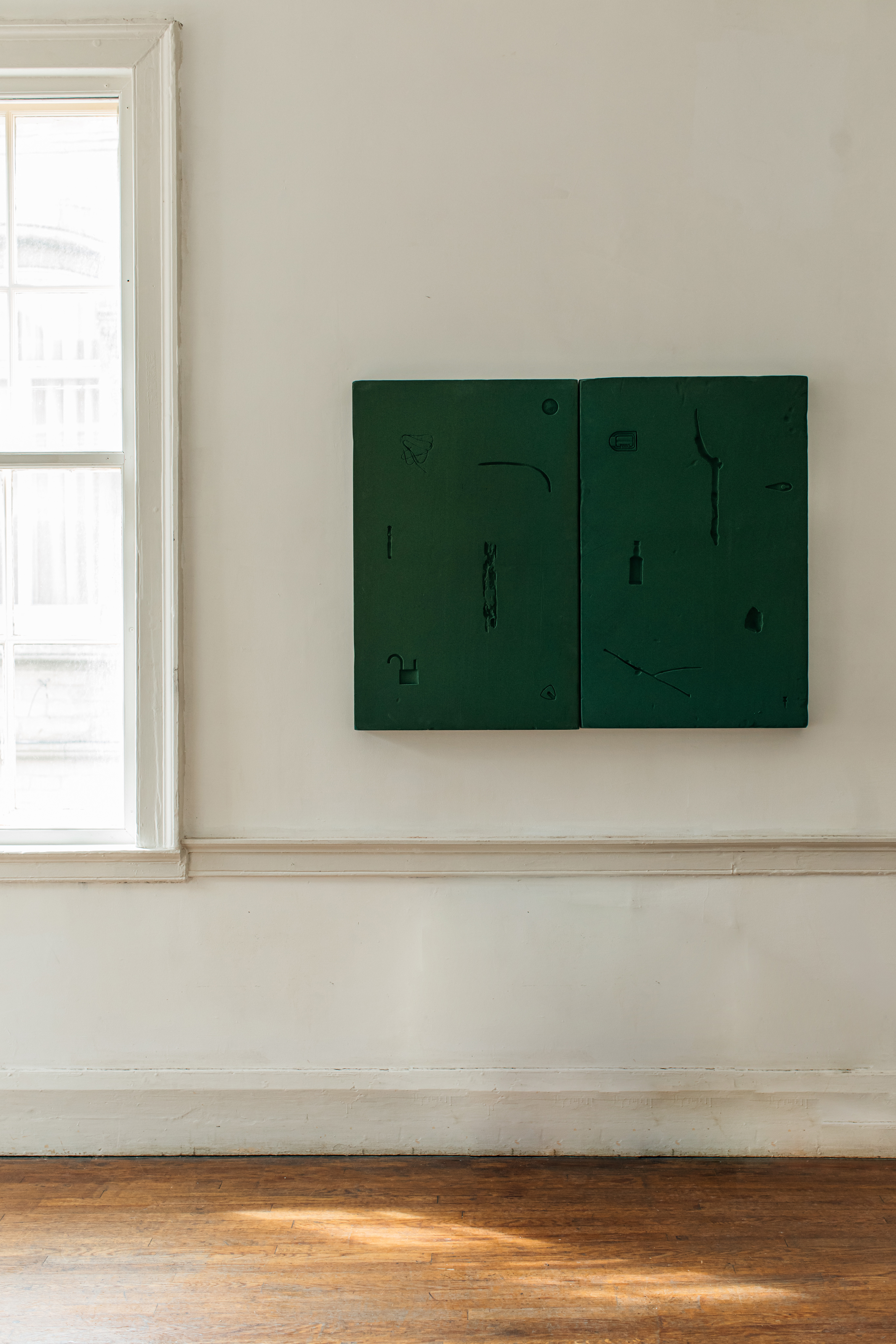
NECROLOGY: Becoming Soil, 2025
A workshop facilitated by Rosalie Bak at Haarlem Artspace & St Mary’s Church, Wirksworth
In Becoming Soil, living human bodies came together to co-sense what it is like to relate to non/living matters and materialities. Drawing on principles from the field of Haptonomy (the practice and study of human relationality and the phenomena of touch) participants were invited to make way for a more sensorial encounter with body, soil and death-care. Unfolding in three parts: ‘Noticing’, ‘Being with/in’, ‘Fermenting’, the creative and somatic exercises played with themes such as tenderness, intentionality, attention and affective touch, while also engaging with the exhibition space, works and surrounding landscapes. An audio-recording with site-specific meditation further guided participants to creep, leak and flow through all surrounding material, temporal, fleshy and microbial entanglements after which they gathered in a process of collective processing of the experience. The ink that was used in the creation of the collective work was made from the ferments of decomposing organic matter.
Curated by Victoria Sharples in partnership with NMRG & Playing Fields. Supported by the AHE Innovation Fund, University of Derby.
Photographs: Victoria Sharples.
A workshop facilitated by Rosalie Bak at Haarlem Artspace & St Mary’s Church, Wirksworth
In Becoming Soil, living human bodies came together to co-sense what it is like to relate to non/living matters and materialities. Drawing on principles from the field of Haptonomy (the practice and study of human relationality and the phenomena of touch) participants were invited to make way for a more sensorial encounter with body, soil and death-care. Unfolding in three parts: ‘Noticing’, ‘Being with/in’, ‘Fermenting’, the creative and somatic exercises played with themes such as tenderness, intentionality, attention and affective touch, while also engaging with the exhibition space, works and surrounding landscapes. An audio-recording with site-specific meditation further guided participants to creep, leak and flow through all surrounding material, temporal, fleshy and microbial entanglements after which they gathered in a process of collective processing of the experience. The ink that was used in the creation of the collective work was made from the ferments of decomposing organic matter.
Curated by Victoria Sharples in partnership with NMRG & Playing Fields. Supported by the AHE Innovation Fund, University of Derby.
Photographs: Victoria Sharples.
Heap, 2025
Stoneware toasted ceramic tiles, tin oxide, aluminium castor wheels, cement-based grout, plywood, softwood timber.
Heap is a site-specific sculpture inhumed in ceramic tiles that preserve surface indentations cast from a familial headstone at Burngreave Cemetery belonging to the artist’s antecedent: surname Heap. The name of the structure becomes performative – assimilating the surname to burial heap-mounds and archaeological unearthings. In form, the necro-architectural sculpture evidences practices of inversion informed by the earliest uses of casting in ancient death masks and votive reliefs. The tiles are abstractions–figurations of bodily absences–presences observing an infra-thin* separation between ‘the ‘mortiferous layer’ of its surface [the cast], from the living context in which we find it [the headstone]: life/death’ (Krauss 1996:77). Heap, therefore, performs a dissection or spatio-temporal cut of site, architecture and body. This procedural dissection may be read within the context of Karen Barad’s agential cut; where matter ‘cuts together/apart as a “holding together” of the disparate itself [...]’ (2012:46). The gridded composition, synonymous to graph paper and space-time nets, allows the loculi-like structure to be performative in its presence: at once material–immaterial, swaying between flat–volumetric, presenting a continuum of spacetimematterings. Heap builds on Sharples’ companion pieces Soft Shell (2023) and Gurney (2023), which methodologically attend to ‘agencies that interconnect substance, flesh and place’ (Alaimo 2018:436).
Shown as part of the exhibition NECROLOGY at Haarlem Artspace, Wirksworth.
Photographs: Emma Croman.
Stoneware toasted ceramic tiles, tin oxide, aluminium castor wheels, cement-based grout, plywood, softwood timber.
Heap is a site-specific sculpture inhumed in ceramic tiles that preserve surface indentations cast from a familial headstone at Burngreave Cemetery belonging to the artist’s antecedent: surname Heap. The name of the structure becomes performative – assimilating the surname to burial heap-mounds and archaeological unearthings. In form, the necro-architectural sculpture evidences practices of inversion informed by the earliest uses of casting in ancient death masks and votive reliefs. The tiles are abstractions–figurations of bodily absences–presences observing an infra-thin* separation between ‘the ‘mortiferous layer’ of its surface [the cast], from the living context in which we find it [the headstone]: life/death’ (Krauss 1996:77). Heap, therefore, performs a dissection or spatio-temporal cut of site, architecture and body. This procedural dissection may be read within the context of Karen Barad’s agential cut; where matter ‘cuts together/apart as a “holding together” of the disparate itself [...]’ (2012:46). The gridded composition, synonymous to graph paper and space-time nets, allows the loculi-like structure to be performative in its presence: at once material–immaterial, swaying between flat–volumetric, presenting a continuum of spacetimematterings. Heap builds on Sharples’ companion pieces Soft Shell (2023) and Gurney (2023), which methodologically attend to ‘agencies that interconnect substance, flesh and place’ (Alaimo 2018:436).
Shown as part of the exhibition NECROLOGY at Haarlem Artspace, Wirksworth.
Photographs: Emma Croman.



Twenty Truant Shapes, 2024
A performance curated by Victoria Sharples. Featuring: Nathan Walker.
An installation of low structures and apertures that frame a body in parts, where language, speech, and memory are also dissected. Twenty Truant Shapes is a durational performance that sustains a tension between interior and exterior sound, visible and invisible bodies, and light and heavy forms.
Nathan Walker is an artist and writer from West Cumbria, working across and between performance art and poetry. Their work explores voices, sounds and language as material.
Short essay: ‘I went camping once, too’ by Alexander Stubbs is available to read on their Substack. It momentarily reflects on Walker’s performance. Below is an excerpt:
[...] in the company of a burnt orange camping tarp, strung up at the corners, moving, adjusting, readjusting, uttering single words, and - at points – climbed out from under it to walk around and play with scattered objects. We spent around ten minutes sitting and watching. Cross-legged on the painted black hard floor. Admiring the dedication to sustained performance, lulling ourselves into inattention. Grasping at that still, motionless body under the cover and wishing that its presence in the room would force every lick of attention out of us. Eventually we left, but not before becoming part of it all. As our hands lifted the carabiner, and we grazed the tops of our heads on the corner of the straps tugging the tarp into place, we shared a moment with the body in hiding. And it stirred something in me. A forgotten dream, or something else. In that small square room, all at once we had wild camped [...].
Twenty Truant Shapes featured as part of the Sheffield Showcase 2024. Supported by Sheffield City Council.
Photographs: Victoria Sharples.
A performance curated by Victoria Sharples. Featuring: Nathan Walker.
An installation of low structures and apertures that frame a body in parts, where language, speech, and memory are also dissected. Twenty Truant Shapes is a durational performance that sustains a tension between interior and exterior sound, visible and invisible bodies, and light and heavy forms.
Nathan Walker is an artist and writer from West Cumbria, working across and between performance art and poetry. Their work explores voices, sounds and language as material.
Short essay: ‘I went camping once, too’ by Alexander Stubbs is available to read on their Substack. It momentarily reflects on Walker’s performance. Below is an excerpt:
[...] in the company of a burnt orange camping tarp, strung up at the corners, moving, adjusting, readjusting, uttering single words, and - at points – climbed out from under it to walk around and play with scattered objects. We spent around ten minutes sitting and watching. Cross-legged on the painted black hard floor. Admiring the dedication to sustained performance, lulling ourselves into inattention. Grasping at that still, motionless body under the cover and wishing that its presence in the room would force every lick of attention out of us. Eventually we left, but not before becoming part of it all. As our hands lifted the carabiner, and we grazed the tops of our heads on the corner of the straps tugging the tarp into place, we shared a moment with the body in hiding. And it stirred something in me. A forgotten dream, or something else. In that small square room, all at once we had wild camped [...].
Twenty Truant Shapes featured as part of the Sheffield Showcase 2024. Supported by Sheffield City Council.
Photographs: Victoria Sharples.
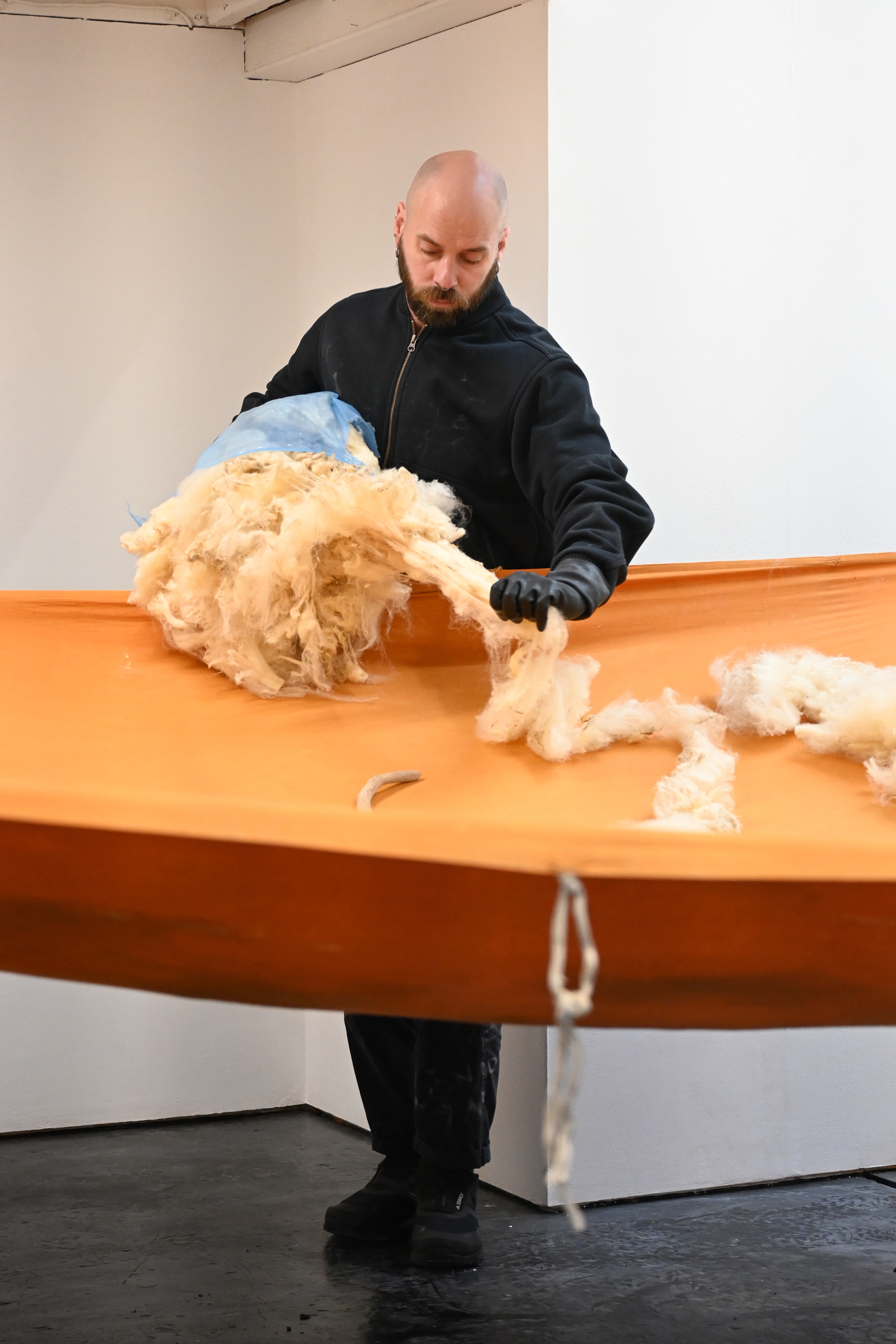
Locusts of the Sickly Sun, 2024
An exhibition curated by Victoria Sharples. Featuring: Speculative Proxy, Alexandra Searle, Joel Wycherley.
An exhibition about precarity and permeance: an emergency exit light with its protective cover replaced by a cast pine resin panel that releases a subtle scent when warm; a nebulous formation of wetware all together synthetic, biological and technological; and a sculpture made of pale-yellow glass, the colour of decline. The register of materiality: resin, polyurethane foam, polyester, steel wire, silicone, mica, atomised rubber, clear lacquer, grass scent, chlorophyll, chromium oxide, synthetic hair, a buffalo horn gua sha tool, marble dish, LED office lighting panel, aluminium & glass, all tied to the economic and ecological. This exhibition is a sentiment to that which is pervasive: insecurity in our contemporaneous present. It is an inaudible monologue of the afflicted, of which there are many, and forecasts plagues to come.
E-publication (coming soon). Supported by Sheffield City Council.
Photographs: Victoria Sharples.
An exhibition curated by Victoria Sharples. Featuring: Speculative Proxy, Alexandra Searle, Joel Wycherley.
An exhibition about precarity and permeance: an emergency exit light with its protective cover replaced by a cast pine resin panel that releases a subtle scent when warm; a nebulous formation of wetware all together synthetic, biological and technological; and a sculpture made of pale-yellow glass, the colour of decline. The register of materiality: resin, polyurethane foam, polyester, steel wire, silicone, mica, atomised rubber, clear lacquer, grass scent, chlorophyll, chromium oxide, synthetic hair, a buffalo horn gua sha tool, marble dish, LED office lighting panel, aluminium & glass, all tied to the economic and ecological. This exhibition is a sentiment to that which is pervasive: insecurity in our contemporaneous present. It is an inaudible monologue of the afflicted, of which there are many, and forecasts plagues to come.
E-publication (coming soon). Supported by Sheffield City Council.
Photographs: Victoria Sharples.


